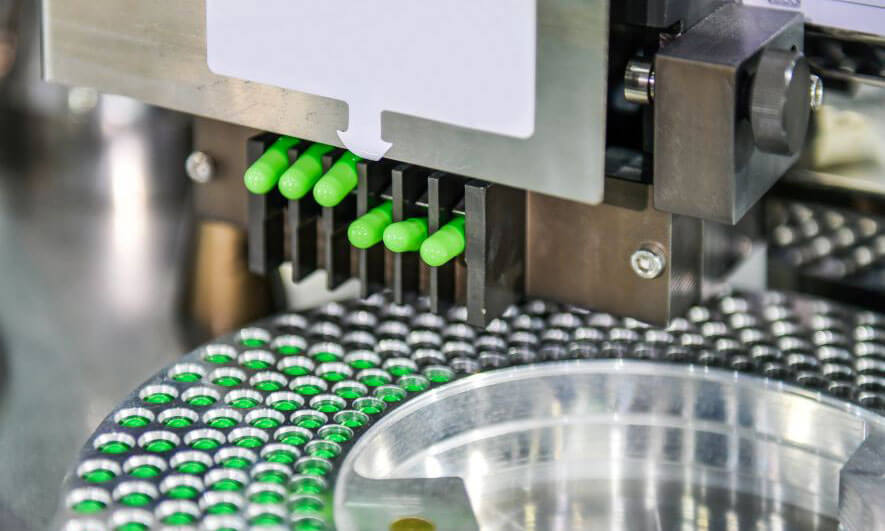For many life science companies, perishable property – cell lines and research tissues, vaccines and other pharmaceuticals – are their most valuable assets. Yet, the storage of biomaterials presents a trifecta of risk.
Most of these perishable products require a controlled environment to ensure safe storage. “If the temperature, humidity or air flow are not at optimum levels then the product could be damaged, potentially resulting in a direct loss of the actual product as well as a business income loss from the company being unable to distribute its product,” says Frank Campbell, underwriting director for Middle and Large Commercial, The Hartford.
Without proper storage in a controlled environment, Campbell says a life science company risks:
- No longer being able to sell the spoiled product.
- The expense of recreating the product and remanufacturing it.
- The possibility that consumers and distributors will believe they cannot rely on your company for a safe and dependable product.
“An interruption can be a significant risk of not just physical damage and loss of product, but reputation and business,” says Dave Gouker, Risk Engineering property director at The Hartford.
What Is a Controlled Environment and Why Is It Important in Life Sciences?
The FDA mandates that storage conditions for pharmaceuticals be carefully monitored to maintain an optimal environment. There are three important factors involved in controlled environments – temperature, humidity and air flow – and each plays a significant role in keeping the product safe.
Temperature: Excess moisture and extreme heat or cold can ruin entire batches of pharmaceutical products.
Humidity: High relative humidity can alter the composition and effectiveness of a drug by destabilizing or degrading the ingredients. It can also contribute to the growth of mold and mildew in the storage room and on the equipment. “When you have any type of moisture or water damage of these products, the products potentially may have to be destroyed because they are no longer viable,” Campbell says.
Air flow: It’s essential to keep air consistently moving throughout the space so that it can carry the intended climate conditions.
Most incidents occur when there is a failure with the hardware, such as refrigeration or cryogen tanks, and when there is no monitoring to alert staff to a problem, says Rob Gaus, executive technical consultant within Risk Engineering at The Hartford. “By far most spoilage losses are the result of undetected loss of refrigeration during off-hours when personnel are not present to detect the problem,” he says.
For example, if the commercial refrigerator or freezer storing pharmaceuticals fails and no one notices it, it is likely that all the damaged medications will need to be destroyed. This is why Campbell says, “it’s always important to make sure you have a prototype or anything else you would need to recreate your product in another storage location.”
Adds Gaus: “The rate at which spoilage can occur is dependent upon several variables, including the amount of time the storage space can maintain [an optimal] temperature during a refrigeration outage, the perishable character of the products involved, outside temperatures, and the nature of equipment operation during the spoilage period.”
Smaller storage spaces such as small walk-in coolers or display cases, often experience a spoilage loss in just a few hours while larger refrigerators typically have a slower rate of spoilage.
Best Practices for Preventing Loss
A majority of loss incidents occur because of a hardware failure. Life science companies can take several steps to minimize hardware failure risk, including:
Regular Maintenance Checks
“Most damage can be prevented by regular maintenance checks. We help our insureds make sure that they have regular maintenance of their equipment,” Campbell says.
He adds that it’s not unusual for a refrigeration tank storing biological research to develop a crack in the double wall tank and fail – but with regular maintenance checks, this loss can be prevented. Campbell recalls a client who purchased cell lines to grow and use in cancer research. The company noticed liquid nitrogen had escaped from the storage tank that held 3,000 vials of cells and discovered that all vials had thawed. As a result, they had to be destroyed.
In addition to preventative maintenance checks, Gouker adds that life science companies should have an emergency service contract for all critical utilities as well as refrigeration equipment, including HVAC, cryogen tanks and electrical equipment.
Develop an Alert System
Set up an alert system to let the company know that something is wrong with the equipment. “Whether it's caused by a power outage or by the chemical breakdown, if the system senses that there's either too much moisture or not enough, or the temperature is rising or falling below levels” it should alert staff in an audible way, Campbell says.
“Any monitoring system should trigger an alert to someone in your organization who can respond as quickly as possible to alleviate the issue,” Campbell says. In addition, the alarm should be connected to a central, UL certified offsite monitoring station to provide 24-hour surveillance. “Alarms need to have battery-power backup and be tied to a landline, not a cell phone, because cell phone towers and cell phone carriers have outages,” Campbell says.
Set Up Backup Generators
Weather can also threaten a controlled environment. There is an increased risk during winter months, particularly in the Northeast due to downed power lines caused by freezing temperatures and in the South due to hurricanes. In addition to a generator, it’s a good idea to have a backup supply of fuel.
Develop a Business Continuity Plan
“The value of a functioning, tested business continuity plan cannot be understated,” Gaus says. A business continuity plan “can help you prepare and respond to disasters such as a loss of power or an equipment failure as well as indicate how many hours the product can remain unspoiled if there is an interruption of power and whether there is redundancy in place for the transfer of product,” Gouker says. Make sure your continuity plan includes tabletop drills and is tested frequently.
Supply chain disruptions can also put your business at risk if you don’t have a plan in place. Your business continuity plan should address supply chain risk potential from a variety of external threats such as pandemics, natural disasters and cyber threats. It’s important to identify your key suppliers, their tier level structure in the supply chain and quantify the risk from several credible sources as part of your plan.
“Having a detailed business continuity plan will help ensure that if there is a loss, it can be mitigated by having a planned program in place,” Gouker says.
La información proporcionada en estos materiales brinda información general y de asesoría. It shall not be considered legal advice. The Hartford does not warrant that the implementation of any view or recommendation contained herein will: (i) result in the elimination of any unsafe conditions at your business locations or with respect to your business operations; or (ii) be an appropriate legal or business practice. The Hartford assumes no responsibility for the control or correction of hazards or legal compliance with respect to your business practices, and the views and recommendations contained herein shall not constitute our undertaking, on your behalf or for the benefit of others, to determine or warrant that your business premises, locations or operations are safe or healthful, or are in compliance with any law, rule or regulation. Readers seeking to resolve specific safety, legal or business issues or concerns related to the information provided in these materials should consult their safety consultant, attorney or business advisors. All information and representations herein are as of April 2024.
Links from this site to an external site, unaffiliated with The Hartford, may be provided for users' convenience only. The Hartford no controla o revisa estos sitios. La provisiòn de cualquiera de estos enlaces no implica la aprobación o asociación de The Hartford con dichos sitios. The Hartford no es responsable y no ejerce ningún tipo de representación o garantía relacionadas con los contenidos, integridad, precisión o seguridad de cualquier material publicado en dichos sitios. Si usted decide ingresar a sitios que no pertenezcan a The Hartford, lo hace bajo su propia responsabilidad.
The Hartford Financial Services Group, Inc., (NYSE: HIG) operates through its subsidiaries, including the underwriting company Hartford Fire insurance Company, under the brand name, The Hartford,® and is headquartered in Hartford, CT. For additional details, please read The Hartford’s legal notice at https://www.thehartford.com





